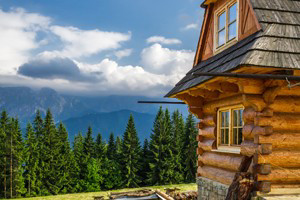- The Boise River rises in three separate forks in the Sawtooth Mountain Range.
- The best known portion of the Boise River is the part of the River that actually flows through Boise
- The North Fork, Middle Fork and South Fork of the Boise River provide opportunities for all types of outdoor recreation.
Overview
The Boise River is an unusual waterway that travels through the scenic Wilderness and also through the largest city in Idaho. The best known portion of the Boise River is the part of the River that actually flows through Boise. But actually the Boise River rises in three separate forks in the Sawtooth Mountain Range. In addition to being a primary water source for the Sawtooth Wilderness Area, the river is a scenic waterway with areas providing excellent fishing opportunities.
Location & Information
The North Fork, 50 miles long, rises in the Sawtooth Wilderness Area, along the Boise-Elmore county line, 60 miles northeast of Boise. It flows generally southeast through the remote mountains in the Boise National Forest.
The Middle Fork, approximately 70 miles in length rises, within 20 miles of the North Fork in the southern Sawtooth Wilderness Area in northeastern Elmore County. It flows WSW near the town of Atlanta, joining the North Fork to form the Boise River, approximately 15 miles southeast of Idaho City.
The South Fork rises in northern Camas County in the Smoky Mountains of the Sawtooth National Forest north of Fairfield, 60 miles east of Boise. It flows generally southwest, descending through a basalt canyon to fill the Anderson Ranch Reservoir, then turns northwest in central Elmore County. It joins the main stream as the southern arm of Arrowrock Reservoir, 20 miles east of Boise.
Contact Idaho Fish and Wildlife for Licensing Information: (208) 334-3700
Activities
Hiking/Biking
Hiking opportunities abound in the Sawtooth Wilderness area of Idaho. Some trails follow the Boise River. In downtown Boise, the Boise Greenbelt links over 850 acres of parks and natural areas along the Boise River, including a 25-mile long bicycle and pedestrian path, paved except for a 1.5 mile section from Barber Park downstream.
Rafting/Tubing
You can raft, tube, kayak and canoe some sections of the Boise River outside of the City of Boise. On some areas of the River, you can also use a drift boat. Barber Park is the starting point for most Boise River floaters. Located 6 miles from downtown Boise on Eckert Rd. between Warm Springs and Boise Ave, you can find raft and inner tube rentals as well as free air stations.
Fishing
The North Fork of the Boise River is made up of many small mountain tributaries which offer great stream fishing. It is best to attempt to access the North Fork of the Boise River during the warmer months. Although many of the streams may require some effort to get to, it will be well worth the hike. The most accessible fishing spots are between Rabbit Creek and Deer Park along Forest Rd. 327. Here you can fish for rainbow and cutthroat trout and whitefish. If you happen to hook a bull trout, you must release it as it is an endangered species.
As its name suggests, the Middle Fork offers something in between the South Fork and the Middle Fork. The Middle Fork of the Boise River provides many opportunities for camping, fishing and soaking in hot springs. Rainbow and cutthroat trout and whitefish are the species caught here. Endangered bull trout are also in this section of the Boise River but must be released.
The South Fork of the Boise below Anderson Ranch Dam (just north of Mountain Home) is classic western water. The fish are big, the bugs are numerous, and novices are likely to get skunked. Regulations requiring artificial lures only and single hooks have the effect of encouraging fly fishing, while not actually requiring it. High spring and early summer flows make the South Fork suitable for driftboats. And heavy fishing pressure in some stretches make the fish tough to catch.



